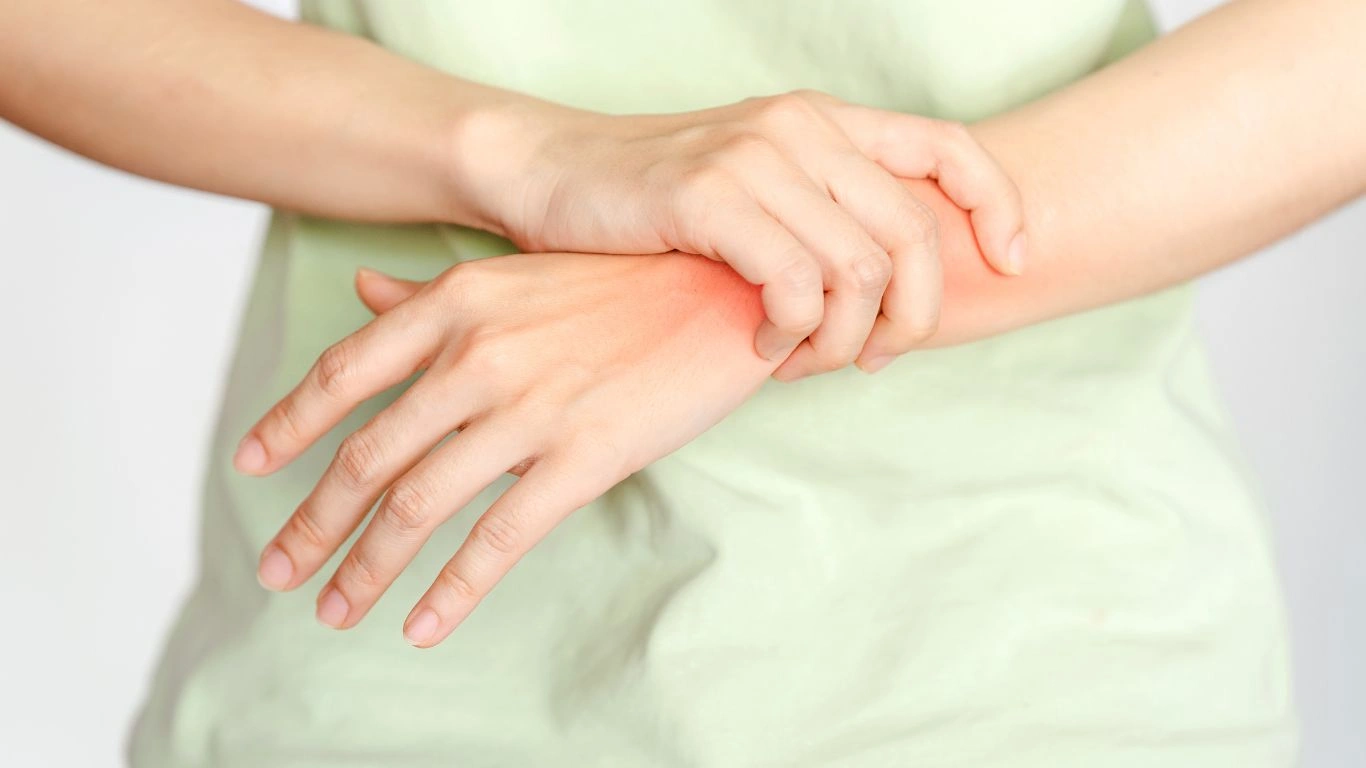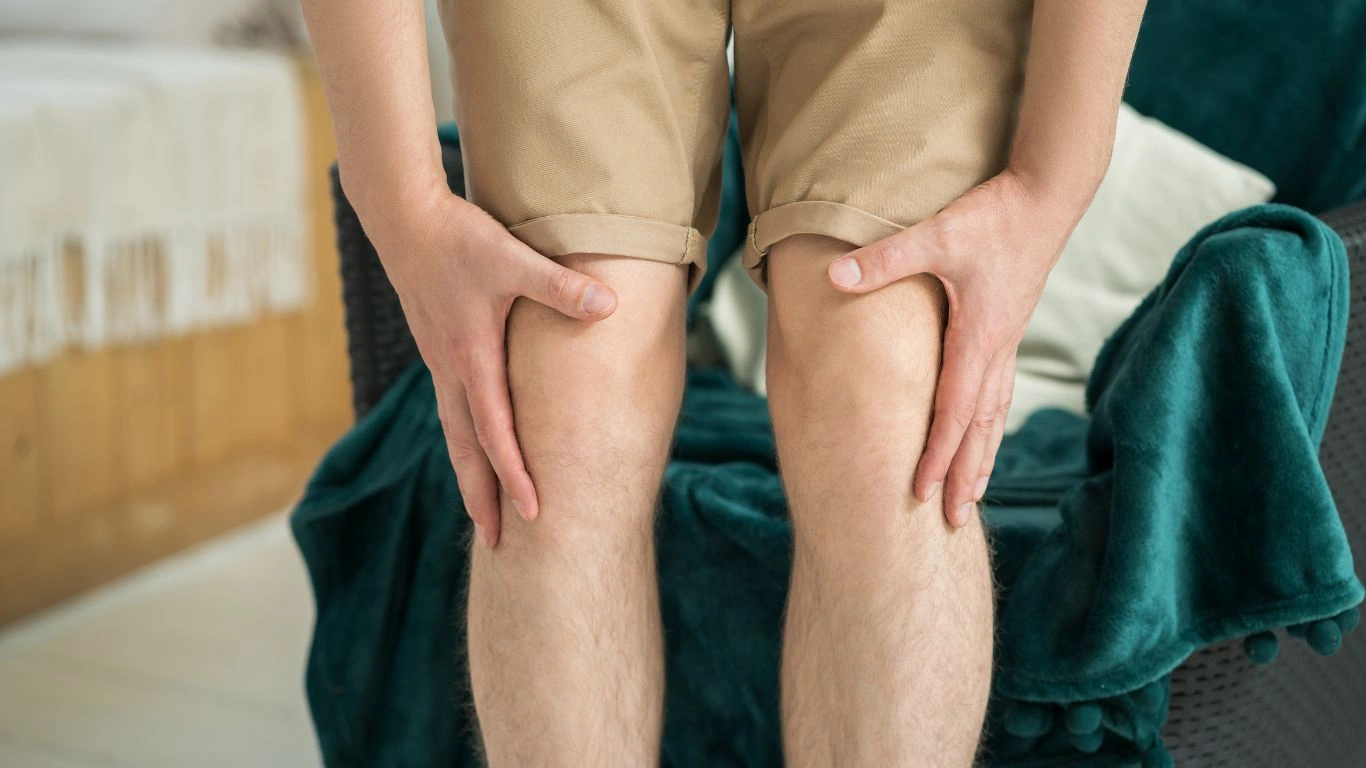Best Ways to Manage Hand Pain from Rheumatoid Arthritis Effectively
Rheumatoid arthritis (RA) can be a challenging condition to live with, especially when it impacts the hands. As a Rheumatology Nurse Practitioner, I’ve seen firsthand how debilitating hand pain can be for people with RA. Whether you’re struggling to grip a cup of coffee or experiencing persistent joint stiffness, managing hand pain is essential for maintaining a good quality of life. In this article, we’ll explore the best ways to manage hand pain caused by rheumatoid arthritis and offer some practical tips that can make a real difference. If you or someone you care about is dealing with RA, understanding the causes and solutions for hand pain is crucial to managing daily life more effectively.
Understanding Rheumatoid Arthritis and Hand Pain

Rheumatoid arthritis is an autoimmune disease that causes inflammation in the joints. In particular, it often affects the smaller joints in the hands, leading to pain, swelling, and stiffness. As the inflammation worsens, it can damage the joints and surrounding tissues, making even simple tasks like opening a jar or typing on a keyboard difficult. Understanding why RA affects the hands the way it does is the first step in figuring out how to manage the pain.
RA primarily targets the synovial membrane, which is the lining of the joints. Inflammation in this area can cause the joints to swell, resulting in the characteristic symptoms of pain, stiffness, and reduced mobility. Over time, if not properly managed, the joints in the hands may become deformed or misaligned, further complicating daily tasks.
Why Hand Pain is So Common in Rheumatoid Arthritis
When we talk about hand pain in rheumatoid arthritis, it’s important to recognize the way the disease progresses. RA tends to affect both sides of the body equally, meaning it often strikes the same joints in both hands. In the beginning stages, pain is usually more noticeable in the wrists and fingers, which are the most commonly affected areas. As the disease advances, it can spread to the knuckles and other joints in the hand.
The pain can be constant, or it may come and go, often worsening during flare-ups. These flare-ups can be triggered by a variety of factors, including stress, weather changes, and even certain foods. But the good news is that with the right management strategies, you can keep those flare-ups at bay and regain better control of your hands.
Best Ways to Manage Hand Pain from Rheumatoid Arthritis

Managing hand pain from RA requires a combination of lifestyle changes, medical interventions, and self-care strategies. There’s no one-size-fits-all solution, but incorporating a few of these approaches into your daily routine can make a huge difference in how you feel day-to-day.
1. Medications: Your First Line of Defense
When it comes to rheumatoid arthritis, medications play a key role in managing inflammation and reducing pain. Disease-modifying antirheumatic drugs (DMARDs) are typically the first treatment prescribed to help slow the progression of RA and prevent joint damage. Biologic therapies are another option for those who don’t respond well to traditional DMARDs.
Nonsteroidal anti-inflammatory drugs (NSAIDs), like ibuprofen, can be effective in providing short-term relief for hand pain during flare-ups. These medications help reduce inflammation and provide pain relief, but they’re not a long-term solution. Your rheumatologist will work with you to find the best combination of treatments that address both the pain and the underlying inflammation.
2. Physical Therapy and Occupational Therapy
Sometimes, strengthening the muscles around the affected joints can help reduce pain and improve function. Physical therapy (PT) and occupational therapy (OT) are great ways to address hand pain in RA. A physical therapist can teach you specific exercises that help improve flexibility, strength, and range of motion in your hands, while an occupational therapist can provide techniques for performing everyday activities with less pain and stress on the joints.
For example, you may learn how to modify your grip on everyday objects or how to use splints to keep your joints stable and aligned while performing tasks like typing or cooking. The right tools and techniques can make a significant difference in reducing hand pain.
3. Heat and Cold Therapy
One of the easiest and most effective ways to manage pain is by using heat or cold on the affected areas. Heat therapy can help relax tense muscles and improve blood flow, which can provide relief from stiffness. You can use warm compresses or a heating pad on your hands for 15-20 minutes at a time. Cold therapy, on the other hand, is great for reducing inflammation and numbing pain. An ice pack wrapped in a cloth or a bag of frozen peas can be applied to your hands for 10-15 minutes to reduce swelling during flare-ups.
4. Joint Protection Techniques
Learning how to protect your joints is key in managing RA, especially when it comes to the hands. This includes making adjustments to the way you perform daily activities to avoid putting too much stress on your joints. For instance, you might use ergonomic tools or aids that reduce the strain on your fingers and wrists.
- Use electric can openers or jar openers to avoid gripping tightly.
- Choose items with larger handles or grips that are easier to hold.
- Take frequent breaks if you’re engaging in repetitive hand movements, such as typing or knitting.
These modifications may seem small, but they can make a huge difference in preventing further joint damage and reducing pain in the long run.
Understanding Your Body’s Signals

Living with rheumatoid arthritis means tuning into your body and understanding its signals. Everyone’s experience with RA is unique, and the severity of hand pain can vary from person to person. By paying attention to the signs and symptoms of a flare-up, you can take steps to manage the pain before it gets worse. Whether it’s adjusting your treatment plan, implementing pain-relief strategies, or making lifestyle changes, being proactive is key to managing your condition effectively.
Managing rheumatoid arthritis and the accompanying hand pain isn’t about completely eliminating discomfort, but rather about finding ways to manage it and live a fuller, more functional life. In the next section, we’ll dive into additional strategies that can help reduce flare-ups and improve overall joint health. Stay tuned for more tips and expert advice to manage RA pain in your hands.
Additional Strategies for Managing Hand Pain from Rheumatoid Arthritis

In Part 1, we explored some of the most common approaches to managing hand pain from rheumatoid arthritis. But there are still plenty of other strategies that can help you tackle RA hand pain more effectively. Let’s dive deeper into additional tips and tools that can improve your daily life and help you regain some independence in your daily activities.
5. Hand Exercises to Improve Mobility and Strength
When dealing with rheumatoid arthritis, you may feel tempted to avoid using your hands to prevent further pain or stiffness. While it’s important to rest during flare-ups, movement is essential to maintaining hand function in the long run. Gentle hand exercises are an excellent way to improve both strength and flexibility, allowing your hands to move more freely without pain.
Incorporating a few simple exercises into your routine can help keep your joints mobile. For example, you can try the following:
- Finger stretches: Hold your hand in a relaxed position and slowly stretch each finger outward as far as you comfortably can. Hold for a few seconds and release.
- Grip strengthening: Use a soft stress ball or a sponge to practice gripping and releasing. Start slowly and gradually increase the time as your strength improves.
- Thumb opposition: Bring your thumb to touch the tip of each finger on the same hand, one by one. Repeat several times.
By consistently doing these exercises, you’ll help keep your hands more flexible and reduce stiffness. Just be sure to consult with a physical therapist to ensure you’re doing the right exercises for your specific condition and needs.
6. Nutrition: Anti-inflammatory Diet for Hand Pain Relief
Diet plays a big role in managing rheumatoid arthritis and reducing inflammation. Although food isn’t a cure-all for RA, incorporating anti-inflammatory foods can support your treatment plan and help minimize flare-ups. As someone who’s worked with many RA patients, I’ve seen how making a few simple dietary changes can have a noticeable effect on reducing pain.
Some foods are naturally anti-inflammatory and can help ease the discomfort caused by swollen joints, such as:
- Fatty fish: Salmon, mackerel, and sardines are rich in omega-3 fatty acids, which help reduce inflammation.
- Leafy greens: Spinach, kale, and other dark leafy greens are packed with antioxidants and vitamins that support joint health.
- Turmeric and ginger: These two spices contain compounds that are known for their anti-inflammatory properties. Adding them to your meals can provide relief from joint pain.
- Olive oil: Extra virgin olive oil is another source of omega-3s and antioxidants, helping to lower inflammation in the body.
On the flip side, there are some foods that can exacerbate inflammation. Try to limit your intake of processed foods, sugary snacks, and foods high in trans fats. It’s always a good idea to discuss your diet with your healthcare provider to ensure you’re making the right choices for your condition.
Alternative Therapies for Rheumatoid Arthritis Hand Pain

Beyond conventional medical treatments, several alternative therapies can help with managing hand pain and improving overall well-being. These therapies may not replace your prescribed treatment plan but can be valuable complementary options when used alongside traditional methods.
7. Acupuncture
Acupuncture is an ancient practice that involves inserting thin needles into specific points on the body to help balance energy flow and promote healing. While the scientific evidence on acupuncture for rheumatoid arthritis is still being explored, many patients report a significant reduction in pain and improved joint function after acupuncture sessions. In fact, I’ve had patients share how acupuncture has made a noticeable difference in their ability to manage hand pain, especially during flare-ups.
If you’re interested in trying acupuncture, make sure to find a licensed and experienced practitioner. It’s always important to consult with your healthcare provider to ensure it’s a safe and appropriate treatment option for you.
8. Massage Therapy
Massage therapy can be a wonderful way to alleviate the discomfort that comes with rheumatoid arthritis. A gentle hand massage can improve circulation, reduce muscle tension, and provide some temporary relief from pain. There are even specialized techniques designed specifically for people with RA, such as myofascial release, which targets the connective tissue surrounding the joints.
Some individuals with RA may prefer self-massage or using massage tools designed for hand therapy. As with all treatments, it’s essential to avoid overdoing it, especially if you have inflamed joints. Always use gentle pressure and stop if you experience any discomfort.
9. Assistive Devices for Hand Pain Relief
As I mentioned earlier, protecting your joints can significantly reduce pain in your hands. One of the most practical ways to do this is by using assistive devices that can make daily tasks easier and less painful. From modified kitchen tools to special grips for pens or toothbrushes, these devices are designed to reduce the strain on your hands and wrists.
Some common assistive devices for RA hand pain include:
- Ergonomic pens and pencils: These have larger grips to make writing easier and less painful.
- Jar openers and bottle grips: These can help you open jars and bottles without having to grip too tightly.
- Adaptive kitchen tools: Tools like knives, peelers, and scissors that have cushioned or larger handles can make cooking much easier on the hands.
These small adjustments can significantly improve your daily life and help you perform activities with less pain and effort. Don’t hesitate to talk to your healthcare provider or an occupational therapist about other assistive devices that might work best for you.
Mind-Body Connection: The Role of Mental Health in RA Management

Living with rheumatoid arthritis isn’t just physically challenging; it can take a toll on your mental and emotional well-being too. Chronic pain, especially in the hands, can lead to feelings of frustration, anxiety, and even depression. The mental strain of dealing with RA can sometimes make the physical pain feel even worse.
Incorporating mindfulness, relaxation techniques, and stress-reducing activities into your routine can help you better cope with the mental aspects of living with RA. Activities like yoga, meditation, and deep breathing exercises can help lower stress levels and reduce muscle tension, which in turn can help ease the pain in your hands.
As a nurse practitioner, I often encourage my patients to take care of their mental health as much as their physical health. It’s important to acknowledge the emotional challenges that come with living with a chronic condition like RA. Seeking professional support through therapy or counseling can also be a helpful step in maintaining a positive outlook and managing the stress that comes with RA.
In the next section, we’ll explore additional treatments and long-term strategies for managing rheumatoid arthritis, as well as some success stories from patients who have found ways to live well despite the challenges of RA. Stay tuned!
Advanced Treatments and Long-Term Strategies for Rheumatoid Arthritis Hand Pain

As we continue our journey into managing rheumatoid arthritis hand pain, it’s important to talk about advanced treatment options that can provide relief and improve your long-term outcomes. In Part 2, we explored various methods to ease hand pain and protect your joints. Now, let’s dive into some of the more specialized treatments and strategies that can help you manage RA more effectively and ensure you’re taking care of your hands in the long run.
10. Surgical Options for Severe Rheumatoid Arthritis Hand Pain
When hand pain from rheumatoid arthritis becomes too severe and doesn’t respond to medication or physical therapy, surgery might be considered. While surgery isn’t typically the first choice, it can be a life-changing option for people whose quality of life is significantly impacted by joint damage. I’ve seen patients make remarkable recoveries after undergoing surgery to improve hand function and reduce pain.
Some common surgical options for RA hand pain include:
- Joint replacement: If a joint in your hand becomes severely damaged, your doctor may recommend replacing it with an artificial joint to restore function and reduce pain.
- Tendon repair: In some cases, rheumatoid arthritis can cause tendons to become damaged or ruptured. Surgical repair of these tendons can help restore mobility in the hand.
- Synovectomy: This procedure involves removing the inflamed synovial lining in the joint to reduce pain and prevent further damage.
It’s important to have a thorough discussion with your rheumatologist and surgeon to understand the potential benefits and risks of surgery. Surgery may not be for everyone, but for some, it can offer a significant improvement in pain levels and function.
11. Biologic Medications: A Game-Changer for RA Treatment
One of the most exciting advances in the treatment of rheumatoid arthritis over the last decade has been the development of biologic medications. These medications target specific components of the immune system that are involved in causing the inflammation that leads to joint pain and damage. Biologics have been a game-changer for many of my patients, particularly those who haven’t responded well to traditional medications.
Some biologic medications commonly prescribed for RA include:
- TNF inhibitors (e.g., Enbrel, Humira): These drugs block the activity of tumor necrosis factor (TNF), a substance in the body that contributes to inflammation in RA.
- Interleukin inhibitors (e.g., Kineret, Actemra): These medications target interleukins, another class of inflammatory molecules involved in RA.
- Janus kinase inhibitors (e.g., Xeljanz, Olumiant): These are oral medications that target specific enzymes involved in the RA inflammation process.
Biologics have shown to be highly effective at reducing inflammation, preventing joint damage, and improving overall function in RA patients. However, like all medications, they come with potential risks and side effects, which is why they should only be used under the guidance of a rheumatologist.
Supportive Measures and Lifestyle Changes for Managing Hand Pain

In addition to medical treatments and therapies, there are several lifestyle changes and supportive measures that can help you manage rheumatoid arthritis hand pain over time. These changes can complement your treatment plan and help you maintain a positive outlook as you navigate the challenges of RA.
12. Stress Management: The Power of Relaxation
It’s well-known that stress can exacerbate rheumatoid arthritis symptoms. Stress triggers the body’s inflammatory response, which can lead to flare-ups and increased pain in the joints. Learning to manage stress is a critical component of living with RA, especially when it comes to controlling hand pain.
In my practice, I’ve seen how beneficial it is for patients to incorporate relaxation techniques like deep breathing, meditation, or guided imagery into their routine. Activities like yoga and tai chi are also excellent ways to promote relaxation and flexibility while gently strengthening the body. Finding an activity that works for you, whether it’s yoga, walking, or simply listening to calming music, can go a long way in reducing stress and improving your ability to manage hand pain.
13. Regular Exercise: Keep Moving to Prevent Stiffness
While it may seem counterintuitive, staying active is one of the best ways to manage rheumatoid arthritis and reduce pain, especially in the hands. Regular exercise helps to maintain joint mobility, improve circulation, and reduce stiffness. I always encourage my patients to find an exercise routine that works for them, whether it’s low-impact activities like swimming, walking, or cycling, or even specific exercises designed to improve joint health.
For people with RA, exercise should always be done gently and without overexertion. If you’re unsure where to start, consult with a physical therapist who can guide you in creating a personalized exercise plan that takes your limitations and goals into account.
14. Using Hot and Cold Therapy Effectively
We briefly mentioned hot and cold therapy earlier, but it’s worth emphasizing just how effective these techniques can be in managing hand pain over the long term. Whether you’re dealing with swelling or stiffness, alternating between hot and cold treatments can bring you relief and improve hand mobility.
Cold therapy is particularly helpful during flare-ups, as it helps reduce inflammation and numb the pain. Applying an ice pack or frozen gel pack wrapped in a towel to your hands for about 15 minutes can work wonders. On the other hand, heat therapy can help ease the muscle tightness that often accompanies RA. A warm bath, a heating pad, or even warm paraffin wax dips can help relax the muscles around your joints and reduce pain.
Be mindful of not using heat or cold for too long at a time, and always protect your skin with a cloth to avoid injury.
Understanding the Role of Mental Health in RA Management
One final point I want to emphasize is the importance of mental health in managing rheumatoid arthritis. RA doesn’t just affect the body; it can have a significant impact on your emotional well-being as well. Chronic pain, fatigue, and the limitations of RA can sometimes lead to feelings of frustration, sadness, or even depression.
As someone who has worked closely with patients managing RA, I can’t stress enough the importance of staying mentally healthy throughout this journey. It’s perfectly normal to have bad days, but it’s crucial to seek support when you need it. Talking to a counselor or therapist, joining a support group, or simply opening up to friends and family can make a huge difference in how you cope with the emotional side of RA.
It’s important to remember that managing rheumatoid arthritis is a holistic process that requires attention to both physical and mental health. Taking care of your mind, body, and spirit is key to maintaining the best possible quality of life despite the challenges that RA presents.
Final Thoughts: Take Charge of Your RA Journey
Living with rheumatoid arthritis, especially when it comes to hand pain, can feel overwhelming at times. But with the right treatment plan, lifestyle changes, and support systems, it’s entirely possible to live well and manage your condition effectively. Whether it’s through medications, physical therapy, stress management, or advanced treatments like biologics, the tools and strategies available today are more powerful than ever.
Remember, everyone’s experience with RA is unique, so it’s important to work closely with your healthcare team to develop a personalized plan that works for you. You don’t have to face this journey alone, and by taking an active role in your care, you can live a fulfilling life despite rheumatoid arthritis.
For more information on rheumatoid arthritis and how to manage it, visit trusted resources like National Institutes of Health (NIH) and Health.com.
Disclaimer: This article is for informational purposes only and is not a substitute for professional medical advice. Always consult with your healthcare provider for diagnosis and treatment tailored to your specific needs.

Tarra Nugroho is a dedicated Nurse Practitioner with a strong foundation in family and preventive care. She brings both compassion and clinical expertise to her practice, focusing on patient-centered care and health education. As a contributor to Healthusias.com, Tarra translates medical knowledge into clear, empowering articles on topics like women’s health, chronic disease management, and lifestyle medicine. Her mission is simple: help people feel seen, heard, and informed—both in the clinic and through the content she creates. When she’s not caring for patients, Tarra enjoys weekend hikes, plant-based cooking, and curling up with a good health podcast.






